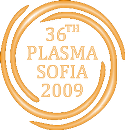Sofia is the capital and the largest city of the Republic of Bulgaria, with approximately 2 million people living in the Capital Municipality. It is located in western Bulgaria, at the foot of the mountain massif Vitosha, and is the administrative, cultural, economic, and educational centre of the country.
Sofia has had several names in the different periods of its existence, and remnants of the city's millenary history can still be seen today alongside modern landmarks. One of the oldest cities in Europe, the history of Serdica-Sredets-Sofia can be traced back some 7000 years. The well preserved town walls from antiquity date back before the 7th century BC, when Thracians established their city next to the most important and highly respected mineral spring, still functioning today. The Church of St. Sofia, built in the middle of the 6th century under Byzantine Emperor Justinian I, gave the city its name.
Sofia's development as a significant settlement owes much to its central position in the Balkans. It is situated in western Bulgaria, at the northern foot of the Vitosha Mountain, in the Sofia Valley that is surrounded by mountains on all sides.
Climate
Sofia has a humid continental climate with high temperature amplitudes. The hottest month is August while January is the coldest. The temperatures in Sofia generally remain cooler than other parts of Bulgaria in summer, due to the high altitude of the valley in which it is situated.
Music and nightlife
Sofia has an extensive nightlife scene with many night clubs, live venues, pubs, mehani (Bulgarian traditional taverns) and restaurants.
Museums
Sofia houses numerous museums, notably the National Historical Museum, the Bulgarian Natural History Museum, the Museum of Earth and Men, the Ethnographic Museum, the National Museum of Military History, the National Polytechnical Museum and the National Archaeological Museum. In addition, there are the Sofia City Art Gallery, the Bulgarian National Gallery of Arts, the Bulgarian National Gallery for Foreign Art as well as numerous private art galleries.
Places of special interest
The city also offers many places of special interest such as the Sts. Cyril and Methodius National Library (which houses the largest national book collection and is Bulgaria's oldest cultural institute), the Sofia State Library, the British Council, the Russian Cultural Institute, the Polish Cultural Institute, the Hungarian Institute, the Czech and the Slovak Cultural Institutes, the Italian Cultural Institute, the French Cultural Institute, Goethe Institut, Instituto Cervantes, and the Open Society Institute. The city is also known for the Boyana Church, which is a UNESCO world heritage site. In addition, Sofia houses the Sofia Zoological Garden, which was founded in 1888. TZUM (Central Universal Store) is the oldest mall in Sofia which was opened back in 1957, recently renovated now it has a plenty of visitors every day due to the numerous stores, restaurants and coffee bars. There are 3 other malls placed in Sofia – Sofia Mall, Sofia City Center and Sky City.
One of the central boulevards in Sofia – Vitosha Boulevard, ranked as the world's 22nd most expensive commercial street – represents numerous fashion boutiques and luxury goods stores and features exhibitions by world fashion designers.
Among the most important buildings constructed in Sofia in the period are the former royal palace, today housing the National Art Gallery and the National Ethnographic Museum (1882); the Ivan Vazov National Theatre (1907); the former royal printing office, today the National Gallery for Foreign Art; the National Assembly of Bulgaria (1886), the Bulgarian Academy of Sciences (1893), etc.
After the Second World War and the establishment of a Communist government in Bulgaria in 1944, the architectural line was substantially altered. A lot of Socialist Classicism public buildings emerged in the centre but after the abolishment of Communism in 1989, Sofia has witnessed the construction of whole business districts and neighborhoods, as well as modern skyscraper-like glass-fronted office buildings, but also top-class residential neighborhoods.
Sofia's tourist attractions include:
| Church | Description | Picture |
| Church of St George | The Church of St George is a late Roman rotunda dated from 4th century situated in the courtyard of the Sheraton Sofia Hotel. It was constructed with red bricks and is considered the oldest building in Sofia. It is known for its Medieval frescoes in the central dome dating from 12-14th centuries. |

|
| Church of St Sophia | The early Byzantine Church of St Sophia was built in the 6th century on the place of an ancient Roman theatre and several earlier churches. During the Second Bulgarian Empire the structure served as the cathedral of the city but was later converted to a mosque by the Ottoman invaders. |

|
| Alexander Nevsky Cathedral | The gold-domed Alexander Nevsky Cathedral was built in the early 20th century in memory of the 200,000 Russian soldiers, who died in the Russo-Turkish War, 1877-1878. It is one of the largest Eastern Orthodox cathedrals in the world. The cathedral's gold-plated dome is 45 m high, with the bell tower reaching 50.52 m. |

|
| St Nedelya Church | St Nedelya is a medieval church that has suffered destruction through the ages and has been reconstructed many times. It was razed in the assault in 1925 that claimed over 150 victims. After the assault, the church was restored to its modern appearance. Today St Nedelya is a cathedral of the Sofia bishopric of the Bulgarian Patriarchate. |

|
| Church of St Petka | The tiny Church of St Petka of the Saddlers from the 14th century featuring some fine frescoes. It is a one-nave edifice dedicated to St Petka, a 11th century Bulgarian saint. |

|
| Russian Church | The Russian Church or the Church of St. Nicholas the Miracle-Maker, built in 1914 is dedicated to the patron-saint of the Russian Tsar at the time Nicholas II. The construction was supervised by the architect A. Smirnov, who was building the Alexander Nevsky Cathedral nearby. |

|
| Museum | Description | Picture |
| National Historical Museum | The National Historical museum is among the largest museums in Eastern Europe and possesses more than 650,000 artifacts. Ancient Thracian treasures, old armoury and weaponry, medieval church plates are among the most valuable objects in the collection. |

|
| National Archaeological Museum | The National Archaeological Museum occupies the largest and oldest former Ottoman mosque in the city built in 1474. It has a large collection of archaeological artifacts from all over the Balkans including some of the golden Thracian treasures. The museum is among Bulgaria's oldest and was inaugurated in 1905. |

|
| National Gallery of Foreign Art | The National Gallery of Foreign Art occupies an imposing 19th century building. The gallery's permanent exposition features European, Asian (Buddhist, Japanese and Indian) and African art, as well as separate contemporary art and engraving sections. |

|
| Place | Description | Picture |
| Ivan Vazov National Theatre | The Ivan Vazov National Theatre is Bulgaria's national theatre, as well as the oldest and most authoritative theatre in the country and one of the important landmarks of Sofia, the capital of Bulgaria. |

|
Other places of interest
- The outdoor book-market on Slaveykov Square.
- The National Palace of Culture cultural and congressional centre - the largest multifunctional complex in Southeastern Europe, inaugurated in 1981 and situated in a lush green park surroundings.
- The Monument to the Tsar Liberator commemorating Alexander II of Russia.
- Sofia's central boulevards paved with Viennese yellow cobblestones.
Sofia - Europe's second oldest capital city, has gifted it a unique atmosphere. Stylish restaurants, bars, and buzzing nightclubs promise that night time will never be boring, whilst the many and varied theatres, concert halls, and cinemas ensure there's always a more relaxed alternative. During the day you can take advantage of countless snug cafes, interesting galleries, and famous museums.



